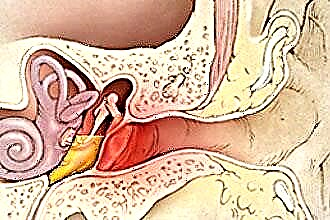A cyst is a benign neoplasm, which is a cavity filled with serous or purulent exudate. A cyst on the amygdala occurs as a result of a violation of the drainage function of lymphadenoid tissues. The obstructed outflow of tissue detritus, mucus, food particles and serous exudate leads to the accumulation of microscopic debris in the glands. The pathological secret stretches the tissues of the palatine tonsil, as a result of which cavities with purulent and watery contents are formed.
As the pathological secretion accumulates, the neoplasms increase in size and can cause discomfort. Untimely removal of tumors leads to the evacuation of microscopic debris into the surrounding tissues, which is fraught with the development of sepsis, retropharyngeal abscess and allergic reactions. Swelling of the mucous membranes leads to a decrease in the lumen in the airways and the development of asphyxia.
Causes
 Why is a cyst formed on the gland? Benign neoplasms most often result from septic inflammation of lymphadenoid tissues. Sluggish pathological processes in the tonsils destructively affect the structure of tissues, as a result of which the drainage function of organs is impaired. The clogging of the lacunae with tonsilloliths (plugs) prevents the normal cleansing of the glands from pathological secretions, which can lead to the formation of a tumor.
Why is a cyst formed on the gland? Benign neoplasms most often result from septic inflammation of lymphadenoid tissues. Sluggish pathological processes in the tonsils destructively affect the structure of tissues, as a result of which the drainage function of organs is impaired. The clogging of the lacunae with tonsilloliths (plugs) prevents the normal cleansing of the glands from pathological secretions, which can lead to the formation of a tumor.
The development of neoplasms in paired organs can be provoked by:
- decreased reactivity of immunity;
- frequent relapses of tonsillitis;
- hormonal imbalance;
- systematic smoking;
- pathology of the nasopharynx.
Untimely removal of cysts in the tonsils is fraught with the development of meningitis and severe systemic complications.
Small benign tumors rarely cause discomfort. They are diagnosed when the patient undergoes a routine examination by an otolaryngologist or differential diagnosis of other ENT pathologies.
Types of cysts on the tonsils
In most cases, the treatment of neoplasms filled with microscopic debris involves the use of anti-inflammatory medications. However, the methods of therapy may differ slightly, depending on the type of tumor and its location. In otolaryngology, when examining the glands, the following types of benign neoplasms are most often found:
- retention - a round cavity with thin walls, containing purulent masses of soft consistency; easily damaged during palpation or mechanical trauma to the mucous membranes;
- dermoid - a cavity with thick walls, which contains curdled masses of dense consistency.
Retention cysts are easily amenable to physiotherapy, during which purulent masses are "pulled" out of the tonsils with the help of a special apparatus. Dermoid tumors are removed mainly by surgery, by excision of the part of the amygdala on which the cyst is localized.
Clinical picture
 How to understand that a tonsil cyst has formed? Benign lesions, the linear dimensions of which do not exceed 5 mm, do not cause discomfort in patients. Large tumors lead to an increase in the volume of lymphadenoid tissues and the appearance of pathological symptoms. The main clinical manifestations of pathology are:
How to understand that a tonsil cyst has formed? Benign lesions, the linear dimensions of which do not exceed 5 mm, do not cause discomfort in patients. Large tumors lead to an increase in the volume of lymphadenoid tissues and the appearance of pathological symptoms. The main clinical manifestations of pathology are:
- sensation of a foreign body in the throat;
- painful swallowing and perspiration;
- obstructed passage of food through the esophagus;
- pain in the affected tonsil;
- burning and rawness when swallowing saliva.
Important! Bleeding from a tumor most often indicates that the neoplasm is malignant.
If cysts form on the surface of the pharyngeal or lingual tonsils, a nasal voice, difficulty in nasal breathing, food penetration into the nose, etc., may indicate the development of pathology.
Drug therapy
Conservative treatment of tumors in lymphadenoid tissues involves the use of antiseptic, analgesic, decongestant and antiphlogistic drugs. Passage of course therapy will allow you to completely get rid of the pathology and prevent the re-development of pathology. After diagnosis, the patient can be assigned the following treatment methods:
- inhalations - "Amikacin", "Chlorhexidine", "Fluimucil";
- rinsing the oropharynx - "Lugol's solution", "Iodinol", "Chlorophyllipt";
- washing of tonsils - "Miramistin", "Rotokan", "Rivanol";
- taking anti-inflammatory drugs - "Laripront", "Biparox", "Aqualor throat";
- taking immunostimulating drugs - Derinat, Betaferon, Immunal.
Important! When rubbing the tonsils with antiseptic agents, do not press on the tumor, as this can lead to the penetration of the contents of the cyst into the tissue of the pharynx.
Hardware treatment
A cyst has formed on the gland, what should I do? Chronic inflammation of lymphadenoid tissues does not respond well to drug therapy. To eliminate the pathological flora and thereby restore the drainage function of the tonsils, hardware treatment allows. Sanitation of the affected organs and "pumping out" of pathological secretions from benign neoplasms stimulates regeneration processes and, accordingly, accelerates the healing process.
Removal of cysts in the tonsils can be carried out in several ways, namely:
- washing with a Tonsillor vacuum apparatus - suction of purulent contents from cysts with a negative pressure pump, followed by the introduction of anti-inflammatory drugs into the tissues;
- sanitation of glands by phonophoresis - ultrasonic cleansing of lymphadenoid tissues from tonsilloliths and soft cysts, which causes cavitation and death of pathogens in the contents of the tumor;
- washing out microscopic debris with a syringe - mechanical cleansing of the tonsils by the pressure of an antiseptic solution supplied with a syringe with a curved tip.
To completely eliminate the cyst, physiotherapy procedures are carried out at least 5 times. To prevent the re-accumulation of pathological secretions in the tonsils, the patient is prescribed antiphlogistic and immunostimulating drugs.
Effects
Untimely treatment of benign tumors entails the development of formidable complications. As the size of the neoplasms increases, the contents of the cyst can penetrate the tissues of the nasopharynx and provoke an abscess of the tissues. Purulent masses cause inflammation of the periaminal tissue, which often becomes the cause of the development of a paratonsillar abscess. Delayed relief of pathological reactions leads to damage to the Eustachian tube (tubo-otitis) and middle ear (otitis media).
Important! A cyst on the amygdala can develop into a malignant tumor and metastasize.
Pathogenic agents spread through the hematogenous pathway throughout the body, resulting in systemic complications such as pyelonephritis, heart failure, meningitis, etc. A common complication is stenosis of the pharynx, in which the patency of the airways is impaired. Tracheotomy or tracheal intubation can save the patient from suffocation.



